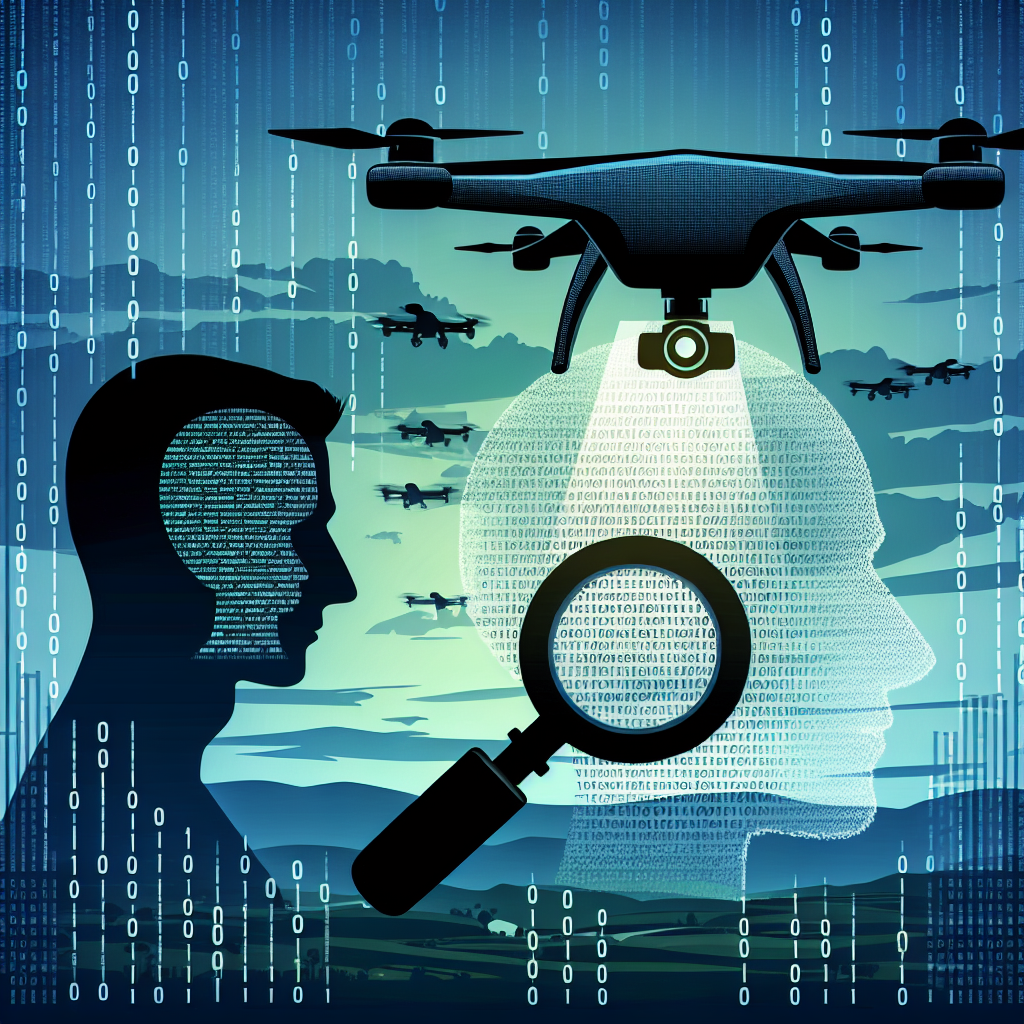The rapid advancement of artificial intelligence (AI) technology has led to the proliferation of drones in various industries, including surveillance. Drones equipped with AI capabilities are being used for a wide range of purposes, from monitoring traffic and wildlife to tracking individuals and gathering intelligence. While the use of drones in surveillance can provide many benefits, such as increased efficiency and improved safety, it also raises serious privacy concerns.
One of the main privacy risks of AI in drone surveillance is the potential for invasive and indiscriminate monitoring of individuals. Drones equipped with AI technology can collect vast amounts of data, including images and videos, without the consent or knowledge of those being surveilled. This data can be used to track individuals’ movements, behavior, and activities, raising concerns about the erosion of privacy rights and the potential for abuse.
Another privacy risk of AI in drone surveillance is the potential for data breaches and unauthorized access to sensitive information. The vast amounts of data collected by drones can be vulnerable to hacking and other security threats, putting individuals’ personal information at risk. In addition, the use of AI algorithms to analyze this data can lead to profiling and discrimination based on factors such as race, gender, and behavior patterns, further compromising individuals’ privacy rights.
Furthermore, the lack of clear regulations and guidelines for the use of AI in drone surveillance poses a significant privacy risk. Without proper oversight and accountability mechanisms in place, there is a risk that drones equipped with AI technology could be used for unlawful surveillance, mass data collection, and other privacy violations. This lack of transparency and accountability can erode public trust in the technology and undermine individuals’ privacy rights.
To address these privacy risks, it is essential for policymakers, regulators, and industry stakeholders to develop clear guidelines and standards for the use of AI in drone surveillance. This includes establishing limits on data collection and retention, implementing robust security measures to protect data from unauthorized access, and ensuring transparency and accountability in the use of AI algorithms for surveillance purposes.
In addition, individuals should be informed about the potential privacy risks of AI in drone surveillance and their rights to privacy protection. This includes being aware of their rights to consent to data collection, access and correct their personal information, and seek redress for privacy violations. By empowering individuals with knowledge and tools to protect their privacy rights, we can help mitigate the risks of AI in drone surveillance and ensure that this technology is used in a responsible and ethical manner.
In conclusion, the use of AI in drone surveillance poses significant privacy risks that must be addressed through clear regulations, transparency, and accountability. By taking proactive steps to protect individuals’ privacy rights and ensure responsible use of this technology, we can harness the benefits of AI in drone surveillance while safeguarding privacy and civil liberties.
FAQs
Q: Can drones equipped with AI technology spy on individuals without their knowledge?
A: Yes, drones equipped with AI technology can collect data, including images and videos, without the consent or knowledge of those being surveilled. This raises concerns about invasive and indiscriminate monitoring of individuals’ movements and activities.
Q: How can individuals protect their privacy rights against AI surveillance drones?
A: Individuals can protect their privacy rights by being informed about the potential risks of AI surveillance drones, understanding their rights to consent to data collection, access and correct their personal information, and seek redress for privacy violations. It is also important for policymakers, regulators, and industry stakeholders to establish clear guidelines and standards for the use of AI in drone surveillance.
Q: What are some of the potential risks of AI in drone surveillance?
A: Some of the potential risks of AI in drone surveillance include invasive and indiscriminate monitoring of individuals, data breaches and unauthorized access to sensitive information, profiling and discrimination based on factors such as race and gender, and lack of clear regulations and guidelines for the use of this technology.
Q: How can policymakers and regulators address the privacy risks of AI in drone surveillance?
A: Policymakers and regulators can address the privacy risks of AI in drone surveillance by developing clear guidelines and standards for the use of this technology, establishing limits on data collection and retention, implementing robust security measures to protect data from unauthorized access, and ensuring transparency and accountability in the use of AI algorithms for surveillance purposes.

